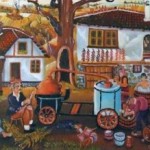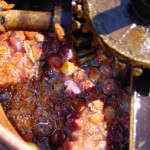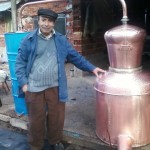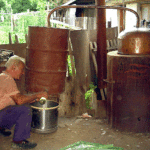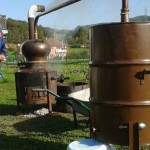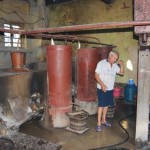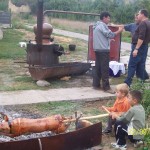Croatian living is a huge subject, far too large to fit into our website. So we have decided to give you a flavour of it. For us life in Central Croatia, away from the sea means that you have continental Eastern European climate. All the seasons are distinct – especially the long warm sunny summer and cold, snow clad winters. Food tends to be more hearty than the coast, meat based (calf, pork, lamb) & supplemented with lake/river fish (carp, trout, catfish). Vegetables are seasonal and you will notice in the supermarkets the prices drop accordingly to coincide with surplus. You can get more “exotic” fruit & vegetables but people tend to stick with locally grown produce. Most new arrivals to Croatia, comment on how tasty the food is (not to mention the generous portions). To wash down the food you can choose from Croatian wine that is one of the best kept secrets of the country. The year is marked by a large number of cultural events, usually relgious – from historic carnivals to pumpkin harvest festivals and open air fish BBQs.
Rakia or Rakija (pronounced rakiya) is the collective term for fruit brandy popular in Croatia. The alcohol content of rakija is normally 40% ABV, but home-produced rakija can be stronger (typically 50% to 80% but going as high as 90% at times). Moving here you will 100% get the opportunity to try it. Due to the tradition of growing fruit trees in your back garden you will highly likely have enough fruit to make your own. Most villages will have an expert maker who will be more than happy to show how the brandy making “happy machine” works. The Croatian word for this device is kazan. It has been said that rakija can be made from just about anything – although the key fruit are plums, pears, grapes and honey.
Croatian wine has a history dating back to the Ancient Greek settlers, and their wine production on the southern Dalmatian islands of Vis, Hvar and Korčula some 2,500 years ago. Like other old world wine producers, many traditional grape varieties still survive in Croatia, perfectly suited to their local wine hills. Modern wine-production methods have taken over in the larger wineries, and EU-style wine regulations have been adopted, guaranteeing the quality of the wine.
There are currently over 300 geographically defined wine regions, and a strict classification system to ensure quality and origin. The majority of Croatian wine is white, with most of the remainder being red, and only a small percentage is rosé wines. In 2010, Croatia ranked 30th in wine producing countries with an estimated 50,000 tonnes.
Wine is a popular drink in Croatia, and locals traditionally like to drink wine with their meals. Quite often, the wine is diluted with either still or sparkling water – producing a drink known as gemišt (a combination of white wine and carbonated water), and bevanda (a combination of red wine and still water).
Central Croatia can help you find a a house with its own vineyard. There are also separate vineyard cottages or “klets” where you can have a strip of vines growing and a place to have BBQs, store your tools with many having sleeping quarters.
Food is one of the best ways to connect with a place & people. Croatia has a superb mix of coastal Mediterranean and mainland continental fayre. Typical food would be:
- Ćevapi – minced meat, skinless sausages cooked over hot coals
- Kulen – usually made in Slavonia – paprika enfused port meat salami
- Fiš paprikaš – mixed freshwater fish, potatoes & hot, spicy paprika
- Kremšnita – a thick wedge of custard cream sandwiched between pastry
Horse-riding and horse breeding have a long tradition in Croatia with indigenous breeds such as the Medimurje, Posavina, Lipizzaner, Hladnokrvnjak, and the Croatian Coldblood Horse. The latter is the most common. Many of these horses have been domesticated over hundreds of years and have proved useful on the farm as well as for recreation. The trend of capital investments is increasing in horse breeding, as one of the major livestock branches in Croatia. A long tradition of horse breeding and natural resources eligible for horse breeding have turned Croatia into a horse lovers paradise. Government financial subventions are also helping horse breeding development.
Certainly the most elegant breed is found on the famed Lipizzaner stud farm in Dakovo, Slavonia. Founded in 1506, it is one of the oldest horse farms in Europe. Central Croatia and Slavonia remain a popular spot for horse riding! Maybe you would like to trek through the mountains or gallop trough out endless fields on horseback, or just wash down finger-licking good grub with a swig of homemade rakija, and crash in a hay barn. Whatever your riding style, you can find it in Croatia. Well help you find a horse ranch of your own.

